I arrived in Iquitos the first time in April of 2014, during my year of community service in Lima, and I returned to the jungle of Loreto 5 more times, sometimes for short periods and sometimes for longer.
Only this year I decided to return for a stable volunteer project, where for six months I have taught swimming to 80 children living in the district of Belén.
I also did training to 30 teachers and students because then it would be them who would have to teach swimming to the children. For those who might want to read or see some pictures of the project, you can go into the site www.duespondeunapiscina.org. In the homepage there is a video which explains how to live in Belén, while in the News section there are pictures of the project.
Living in Iquitos is completely different from traveling there for short periods.
This experience has allowed me to enter in connection with the inhabitants, take their accent, know their customs; I learned to cook their typical dishes.
Many also are the opportunities to move around and visit some communities or just to merge into the forest.
In these years I became a friend of Luis, a curandero, a shaman who lives with his family in the forest. Luis has a formidable memory and recognizes all the main plants, useful to treat several symptoms. The shamanic practice is passed down orally from father to son over generations.
Iquitos is my second home and there I made another family of friends and people who care about me. I am sure that this relationship will not stop and soon we will return.
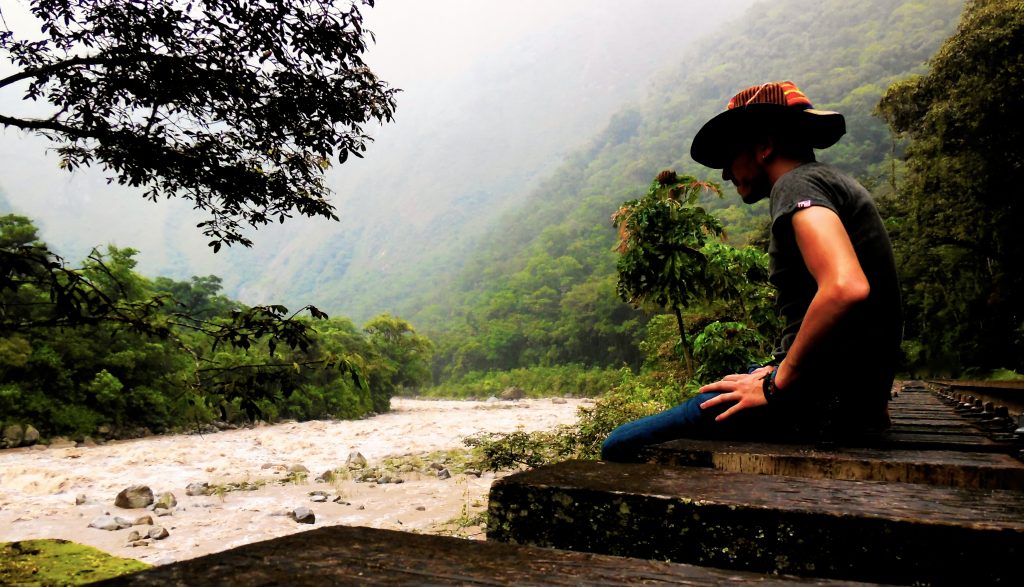
Iquitos, located in the far north-east of Peru, about 100km from the border with Colombia and Brazil, is the capital of the province of Maynas in the Department of Loreto. Iquitos is considered the largest city in the world not reached by land as you can get there only by four days in boat, after a long crossing of the Andes, or more comfortably with a couple of hours flight from Lima.
Today, almost half a million people live in Iquitos, which qualifies it as the largest city in the Peruvian Amazon and the fifth most populated city of Peru. Iquitos is not an ordinary city, indeed, quite the opposite. We can define it an island by way of the rivers that surround it: the Rio Nanay and Rio Itaya, both tributaries of the majestic Amazon River that touches the northern part of the city.
The exact date of the city's founding by the Spanish Jesuits who arrived here, in the banks of the Rio Nanay, lands of the "Iquito" and "Cocama" natives, is unknown, approximaely in 1757. Driven by the evangelical mission and the aim to civilize the savages, the missionaries brought with them smallpox, tuberculosis and pneumonia that severely decimated indigenous populations. Gathered in force in the city and converted to Christianity, the natives were enslaved, tortured and murdered by petty people who made a fortune during the fever for rubber (1880-1915), when the European industries began to produce the first tires.
Rubber, latex or natural rubber, in those years was extracted mainly in the Amazon, which originated a real and proper socio-economic change in cities like Iquitos or Manaus.
Imposing colonial buildings began to rise up, decorated with "azulejos", finely decorated ceramic tablets imported from Portugal. In the main square of Iquitos (Plaza de Armas) was erected in 1887 the "Casa de Fierro", designed by Gustave Eiffel in person. The “Casa” arrived in Iquitos after crossing the Atlantic and going up the entire Rio of the Amazon aboard a Brazilian ship. When the rubber production became intensive in the Philippines, the fever ceased, and the cash flow diminished, leaving in misery the city of Iquitos.
Today the city survives on fishing, deforestation (often illegal) lumber trees, agriculture of local products to oil wells located on the border with Ecuador. In recent years, tourism has had a significant increase, especially for the rediscovery of the millennial shamanistic culture that attracts travelers from around the world eager to try the ayahuasca, a drink once used as medicine, purifying and potentially hallucinogenic, now consumed in ceremonies where the shaman, through his songs, guides you in an introspective journey.
Iquitos offers the visitor much more: from the possibility to navigate the Amazon River, born from the union of two large rivers a few kilometers before the town, on the long boats on the surface of the water called Peke Peke, due to the noise of the engine; to the many adventures that offers a Selva as fascinating as unexplored , full of amazing plants and animals; to the discovery of ancient traditions and peculiar lifestyles of ancient cultures that have adapted to live in an inhospitable environment and full of dangers such as the Amazon rainforest.

The city offers many places of note . In the center you can see the many colonial buildings , imperious and decadent at the same time , dating back to the golden blanket.
The "malecón" offers a broad view of the Rio Itaya and beyond to the infinite green sea. Along the Malecón you will find the more touristic bars (I recommend the Karma Kafé that hosts an Amazonian art gallery with many paintings and various sculptures) , the craft markets, ice cream shops and in the evening you can watch various shows and finally take a breath of fresh air.
At 10-minute motorcycle taxi from downtown, or 20 walking along the Malecon, we find the most picturesque and magical district of Iquitos: the "Barrio de Belén". The district was founded on the banks of the Rio Itaya and is divided into two parts, the high one that hosts its huge market, commercial beating heart of the city, and the lower part, called Pueblo Libre de Belén, the most densely populated and marginal area of the city.
The Rio Itaya suffer from the floodings of the Amazon and in the months from March to June, the lower part of this district is submerged and several meters of water transform the lives of the inhabitants of Belen.
The ground floors of the houses are vacated and people live on the floor above. Throughout the neighborhood kilometers of wooden walkways are built, several meters high, to be able to walk without getting their feet wet in dirty muddy waters. In June the tide goes down, leaving tons of garbage never collected during these months and a worrying health situation with many animals which include mice, dogs, and numerous "gallinazos" (relatives of the vultures) that find food in the garbage. Moreover, in the pools of water created with the fall of the tide, hatches out millions of mosquitoes that carry diseases like dengue and Zika.
Oranges, bananas, yucca, spices, fish and meats of all kinds. Over the last hundred years the market of Belén has not changed much and remains in essence the place to do shopping in Iquitos. On its stalls, open every day from Monday to Sunday, you can buy fish freshly caught in the rivers and still alive, smoked meats hunted by the communities in the forest, fruit and vegetables in the Amazon region, but also household items, mobile phone accessories and clothing. The vendors shout, the clients negotiate, everyone is looking for a deal.
That of Belen is the main market of the city, where thousands of people sell and buy the many products of the Amazon region. Open from 5am to 1pm, the market is a huge maze of a thousand alleys full of stalls and informal shops teeming with people. The feeling on entering is that of being sucked into a vacuum cleaner and transported in some bygone era.
There are about 150 native communities that arrive via the river even before the opening of the market to sell their products: Amazonian fruit, yucca or strange fish freshly caught in the rivers. At the market you can find over 200 different types of vegetables and more than 120 species of animals, between terrestrial and aquatic.
The smell and the filth increase with the passage of time and the increasing of the heat, reaching its peak at 2pm.
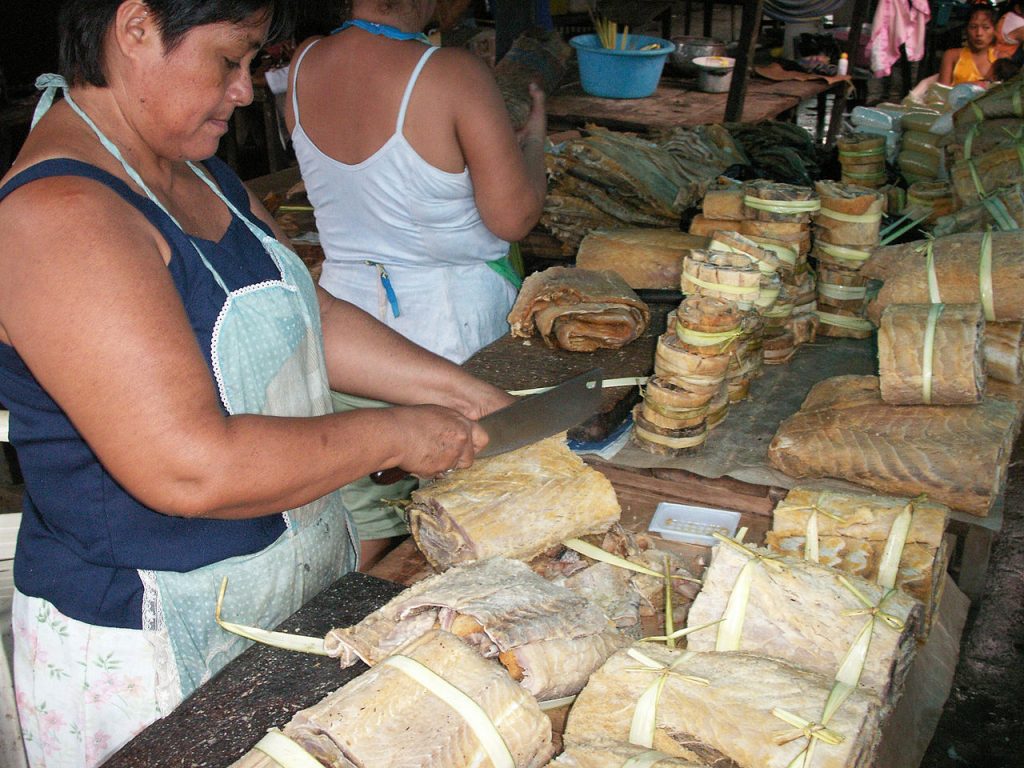
To be visited attentively is one of the market streets, the 'Pasaje Paquito', perhaps the most famous alley in the market. Here, among dozens of stalls, you can find all the medicinal herbs used by the "curanderos" to heal all sorts of illnesses, dozens of "tragos" (aphrodisiac liquor), ointments of all kinds and even palo santo, natural incense, powders of magical psychotropic effects.
The handicraft is not lacking: lucky seeds, woven bracelets and necklaces made of fish scales are some of the products created by the skilled local hands.
The handicraft markets are excellent spaces where to get to know the local folklore admiring beautiful pictures painted with natural resins depicting ancient indigenous, proud with their feathers and their Shipibo cloths.
About twenty minutes from the historical center, along the road to the airport, it is possible to visit the handicraft market of San Juan. There you will find a man who for many years have been painting pictures depicting the flamboyant shamanic visions, where cougars and snakes glow of fluorescent colors in the dark night of the Amazon. Also interesting are his landscapes: spectacular sunsets and full moon nights along the banks of the Amazon River. Incredibly beautiful paintings that he sells from 10 euros each.
Unmissable are the sunsets visible from the malecón or the "Moronacocha” Lagoon, where the sun stains the Amazonian white clouds pink and illuminates the calm waters of the lagoon where some ladies go to fish the dinner.
The cuisine of Iquitos is very varied and is a credit to the Peruvian gastronomy. Because of the influence deriving from the Amazon Forest, the cuisine of Iquitos has several typical dishes from traditional flavors that include "guisos", sauces, meats, salads, soups and many specialties cooked on the grill. Most of the ingredients are obviously specific to the region, while others are imported from Lima because it is impossible to grow them in Amazonia.
Omnipresent is the fruit, of various shapes, colors and flavors. The most emblematic fruit is Aguaje, of the homonymous palm native of damp and water rich places. With 50 times the vitamin C of the orange, the Camu Camu resembles a cherry, and is used to prepare drinks and fruit juices. Other fruits are the coconut, the passion fruit, the guanábana, melon, macambo, the lúcuma ett .
I could spend hours to nominate all the amazing variety of fruits and the remarkable property of each but I believe that would spoil for you the surprise to try them in the markets and from the stalls in Iquitos.
Among the stalls you can find meat from animals such as "sachavaca" a giant tapir, the "sajino" or a wild boar, armadillos, turtles, crocodiles and monkeys. For some animals I do not recommend the consumption as they are in danger of extinction. Among the huge variety of fish present in the stalls of the markets we find the "Paiche", which is the largest fish in the Amazon River. This giant of rivers can reach a length of 2.5 meters and a weight of 300kg.
Fish and meat are cooked grilled and enveloped on the leaves of a palm tree called "Bijao".
With the same leaves are covered the famous "Juanes" , preparations based on rice, spices, chicken meat, and to finish, an egg and an olive.
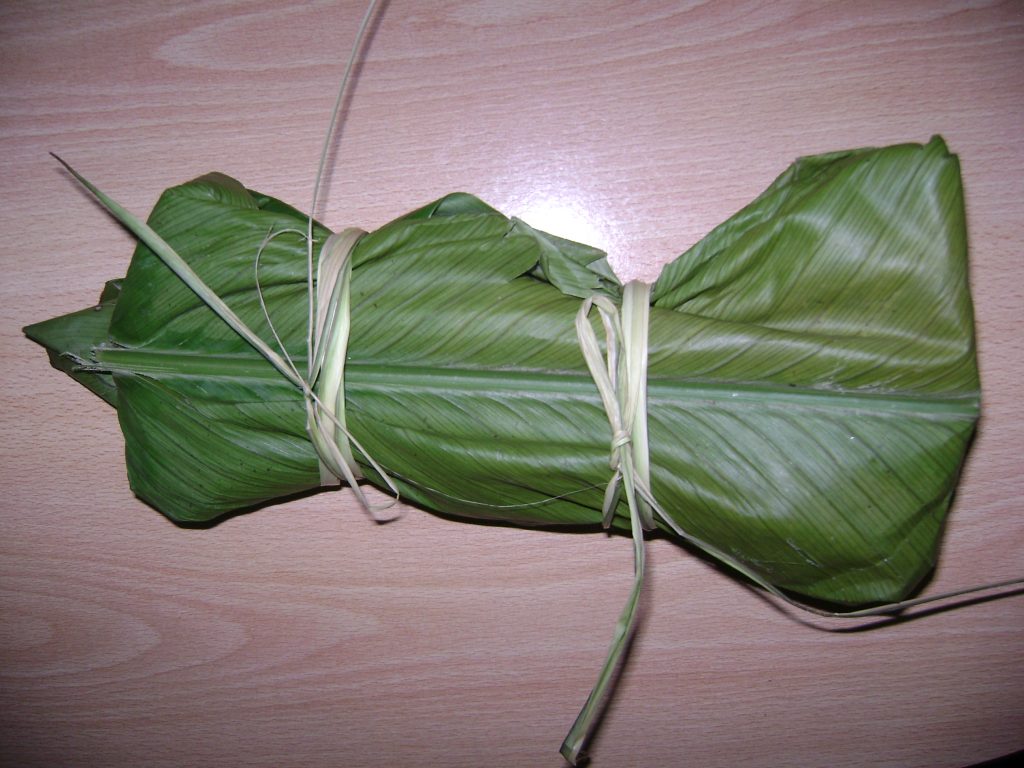
Other typical dishes are "tacacho" which is a dish made of mashed bananas, amassed and fried, the "Ensalada de Chonta" made of filaments of chonta, a palm tree, ending with the "Patarashca", a whole fish cooked grilled wrapped in the leaves of Bijao and surrounded with various sauces, including salsa de "Cocona", a very sour fruit, or "Aji Charapita", a tiny yellow chili very very spicy.
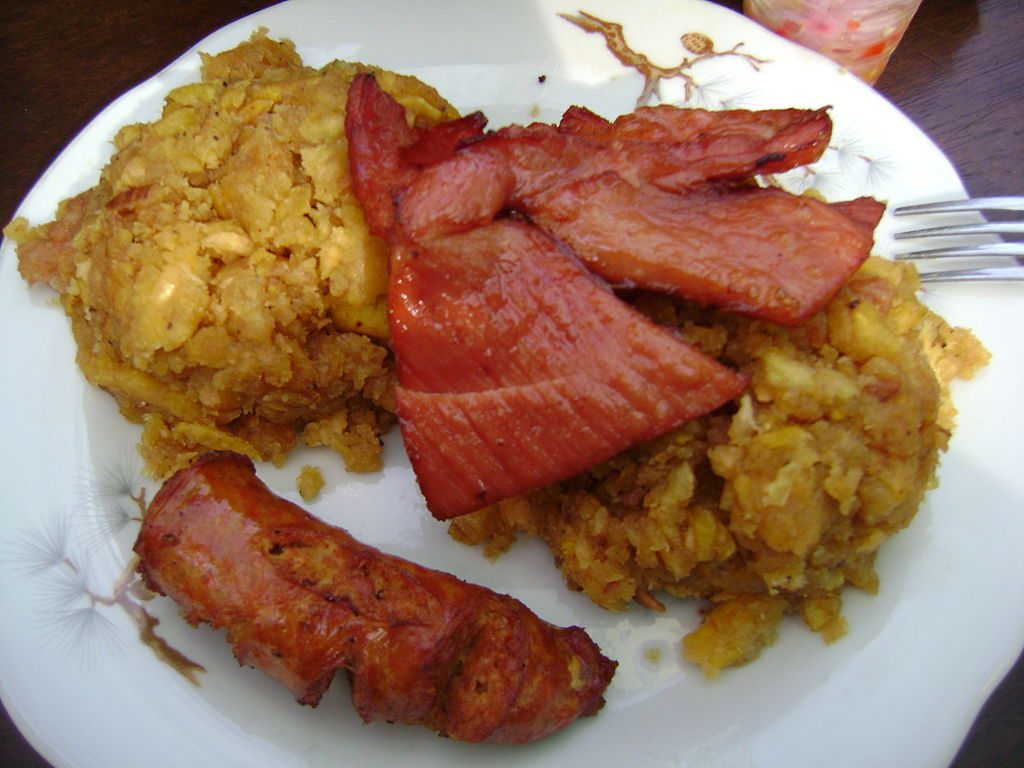
If you want to cook some of these dishes, you can find the typical Amazonian ingredients in the markets, especially that of Belén but also that of Bellavista-Nanay where the people of the community bring their products by river. If you do not feel like cooking you can sample some of the many restaurants in the city, among which stands out "Al Frio y Fuego", given its peculiarity of being located in a huge "maloca" (wooden house with a roof of leaves) floating in the midst of the river.
The rubber fever gave to Iquitos a more cosmopolitan view. Just as indeed in all of Peru, even here there are numerous "chifa" or Chinese restaurants that have mixed their food with the Peruvian, pizzerias like "Anticat" and restaurants with US influences riadapted to the Amazonian ingredients like "Aris Burger".
The Amazon, not only by definition, is the green lung of the world, contributing in an essential way to the possibility of survival on our planet. The forest surrounding Iquitos is very rich in biodiversity. The forest is home to over 850 species of plants, of which 22 species of orchids and the majestic water lilies Victoria Regia.
In the dense forests live 130 types of mammals, 330 types of birds, 250 fish of different forms and 150 different species of reptiles and amphibians. Just think that a few years ago, had been found, in the waters of Iquitos two examples of bull sharks that, from the Atlantic Ocean had gone up the 3.360km of the Amazon River!
The nature reserves were created to protect these environments, as wonderful as much as delicate, from the informal constructions that plague the outskirts of Iquitos.
The Allpahuayo Mishana National Reserve is an incredible reserve that begins just 20km from the city of Iquitos. It stretches along the Rio Nanay. Amazing are its white-sand forests where 17 different species of primates live. Along the rivers and the lagoons it is possible to come across can the gray dolphin or the much bigger "bufeos", the Amazonian pink dolphins.
Near the entrance of the reserve you can visit the Quistococha complex where the dry season to form a huge beach along the banks of the Rio Nanay and it is possible to swim in the river . There is also a secretary bird and a small zoo .
The mariposario Pilpintuwasi is located in Padre Cocha and can be reached via boat going up the Rio Nanay from the port of Bellavista. Here you can observe more than 40 species of insects including many colorful butterflies.
In the surroundings of Iquitos you can visit many communities who still live in contact with nature, where consumerism seems not to have reached yet to transform millennia of habits and traditions. The nearest community to the city is that of Boras, a native pueblo of Colombia and forcibly compelled to shift during the rubber fever.
Another pueblo which nevertheless live in community, without electricity and in houses of wood and straw, is the pueblo of Yahuna or Yagua. They, also originated in the Colombian border, were forced to transfer to be used as slave labor in the collection of caucciu. Many agencies in town offer the opportunity to visit these two communities transforming them into tourist attractions.
Other communities are within a few hours or a few days navigation along the Amazon River. Reaching those areas, in addition to being challenging, is dangerous because of malaria and the distance from any medical facility, so I recommend going into the forest always with an experienced guide.
Getting to Iquitos has never been easy. I imagine the difficulties that the first Spanish settlers had to overcome to reach those lands so remote and wild. The distance from all and everything has meant that Iquitos has always been isolated from "modernity" and has grown at a pace all its own. Without a road to connect it with the coast or the Andes, the city has always been a real and proper world apart with special rules and customs.
Today you can reach Iquitos in two ways: a traditional via river and a more modern by air.
To get there by land you must reach one of the two ports connecting Iquitos to the rest of Peru: "Yurimaguas" on the Rio Marañón and "Pucallpa" on the Rio Ucayali. In both cases, you must get across the Andes by long hours of bus rewarded by the wonderful scenery that you will see from the window. At the port an old three-storey boat called "spear" will be waiting. The ground floor is dedicated to all goods that arrive regularly from the coast.
The first and the second floor instead are huge spaces that collect hundreds of people. Once placed the hammock you will only have to arm yourself with patience because the boat will leave when full. If you're unlucky it can take more than a day. Once the boat sets out, you will arrive at Iquitos after 4-5 days, depending on which port you left from.
Spending all these days in a boat is not for everyone. You sleep in hammocks very close to each other, you cannot get off the boat and the hygienic conditions are questionable, especially in bathrooms and showers, as the water comes directly out of the brown water of the river. All this will be paid off though from the making acquaintance of fellow travelers, of the freedom that you breathe and the incredible Amazonian sunsets. For this type of experience you need at least a week.
Getting to Iquitos by plane is quite another affair. The Airlines that offer daily flights from Lima to Iquitos are "Peruvian Airlines", "Star Peru" and "Lan". Both the planes and the airports are modern and safe. In Peru there are no low cost flights. The cheapest company is often "Peruvian Airlines". From Lima it takes an hour and a half if the flight is direct, more than two hours if a stop is made in Tarapoto or Pucallpa .
After landing in Iquitos you will be swallowed up by the loud city traffic, so much so that the sound contamination converts Iquitos into the noisiest city in Latin America. There is only one road that connects the airport to the city and it is crossed by dozens of antiquated buses and hundreds of motorcycles and motorcycle-taxis that roam about without respecting any rule. The means of transport, in the end, are part of the local folklore.
The colorful buses, called "Jumbo", are the cheapest way to get around town. They are made entirely of wood and covered on the outside with metal plates.
The means par excellence is instead the motorcycle taxi, ubiquitous motorcycle with three wheels and a sofa that can comfortably accommodate three people, sometimes many more. One day I saw three mothers with 9 children along!
The motorcycle taxi is used for any kind of moving around because the vast majority of the Iquiteños do not own a car. It is also used for all removals, for weddings and funerals, to bring the goods and animals to the market, in short, we can see a bit of everything. In the city there are more than 5,000. It is certainly the most versatile and popular means of transport.
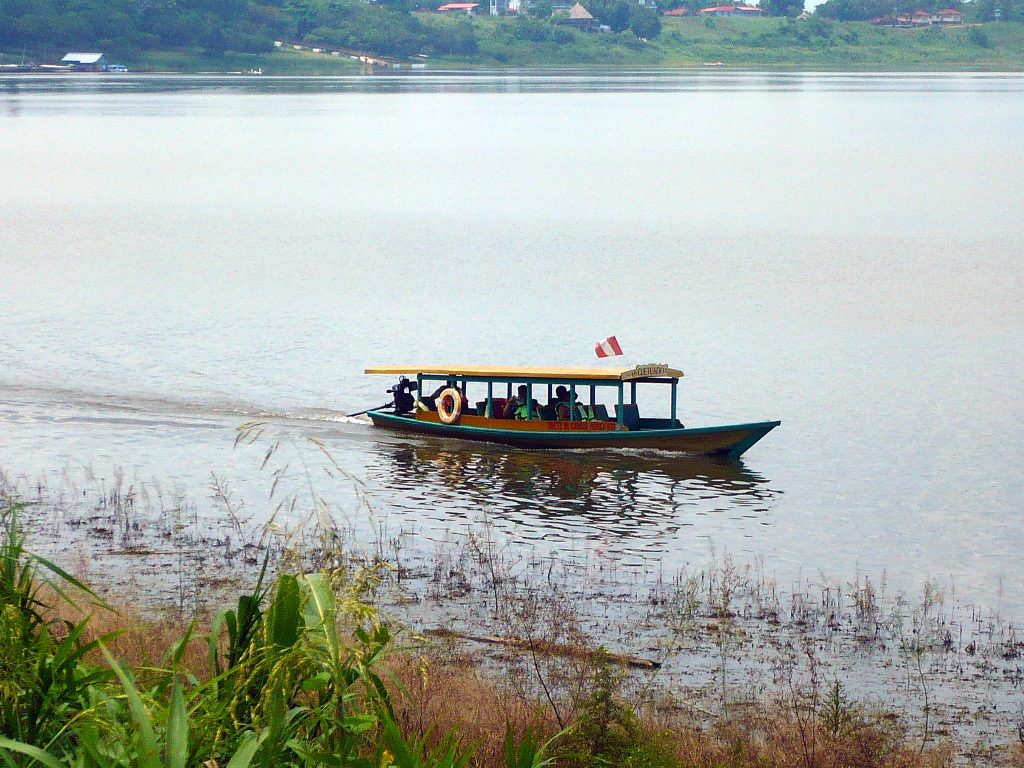
Other means of transportation widely used, especially by those living in indigenous communities out of Iquitos, is the peke peke, a long motor boat that can accommodate twenty people plus varied goods . With these boats are guaranteed the daily connections between the various ports of the city and nearby communities. For remote communities there are faster and more modern boats.
General Prices
Lancha Yurimaguas->Iquitos: 90 soles
Flight about 100US$
Peke Peke 3 soles;
Mototaxy oles in the city and 10 soles from the airport
Bus ticket 1 sol in the city and 1.5 soles out of town.
Disclaimer: In questo post, alcuni dei link forniti sono link di affiliazione, il che significa che posso guadagnare una commissione se si effettua un acquisto attraverso questi collegamenti. Tuttavia, ciò non comporta nessun costo aggiuntivo per te. Le commissioni che ricevo attraverso questi link di affiliazione aiutano a finanziare e supportare il mio blog, mantenendo così la sua indipendenza e la mancanza di sponsorizzazioni. Mi sforzo sempre di fornirti le migliori informazioni e consigli possibili, basati sulla mia esperienza e ricerca personale. Mi preme sottolineare che il tuo sostegno è fondamentale per mantenere vivo questo blog e continuare a fornirti contenuti di qualità. Grazie per il tuo supporto!
Alcune immagini pubblicate sono state tratte da Internet, nel caso in cui, il loro utilizzo, violasse diritti d’autore, mandateci una mail a [email protected] e verranno immediatamente rimosse.